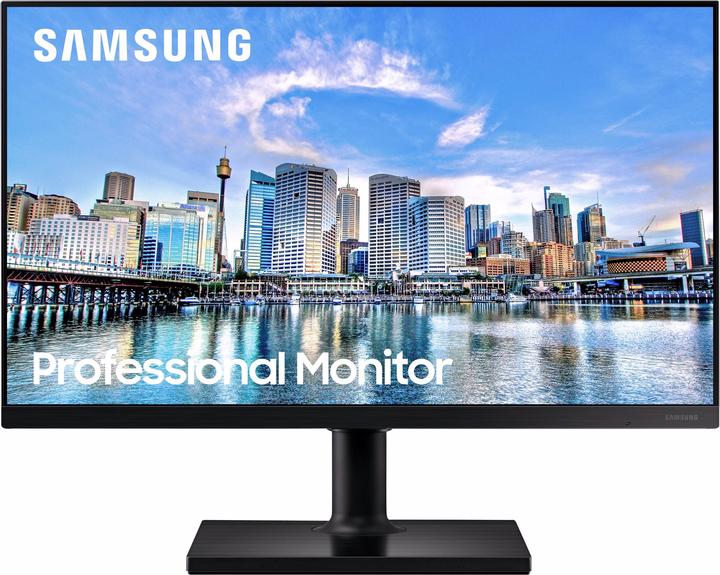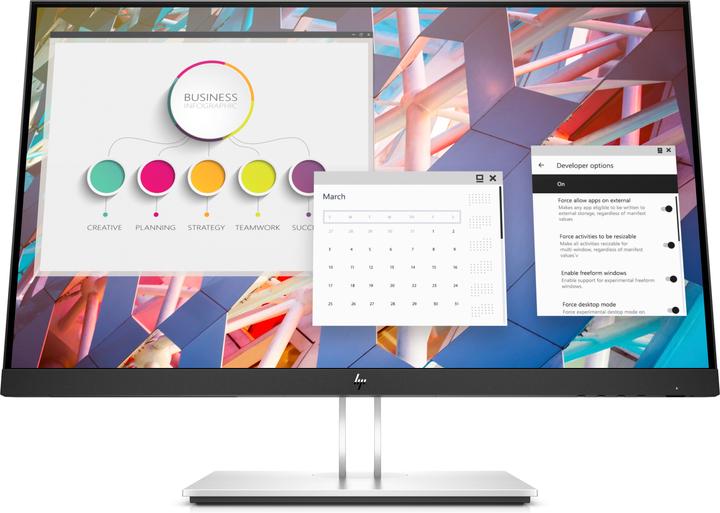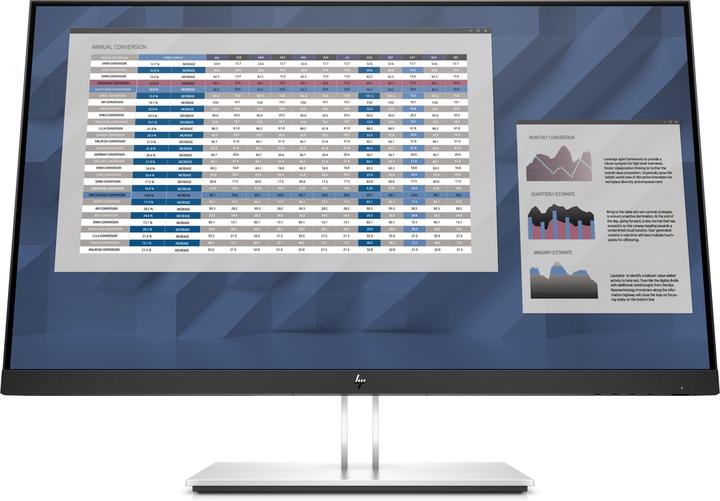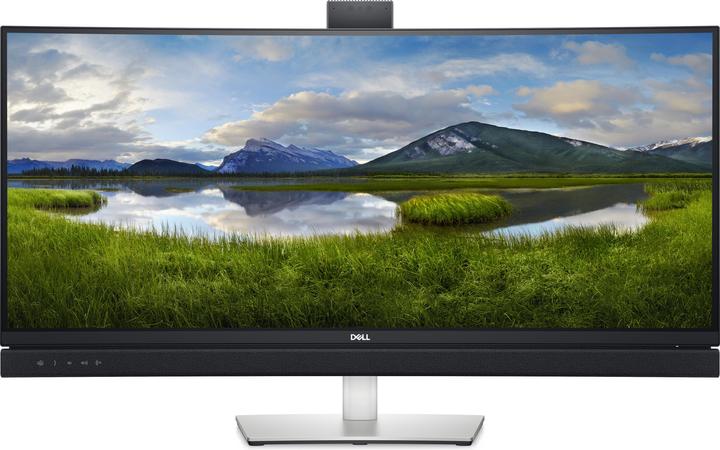

Monitors for a home office set-up or open-plan office
There are a few points to consider when buying a monitor. Read on to find out which of those you should pay particular attention to when purchasing a monitor for your home office or open-plan office.
A look at our shop and our filters shows the many aspects you can consider when buying a monitor. This article focuses on monitors that are used in home office set-ups and open-plan offices. If you’re looking for a gaming monitor you’re in the wrong place – you can find them here. While factors such as response time, refresh rate and resolution are essential for a gaming monitor, they're not particularly relevant for most office jobs. These days, the majority of smaller monitors offer at least Full HD (1920 x 1080 pixels) anyway. For monitors over 32 inches, QHD resolution (2,560 × 1,440 pixels) is standard. When purchasing office monitors, factors such as brightness and contrast, energy efficiency, ergonomics and the size and number of screens are therefore more important than the resolution.
Number and size
Number and size are two factors which are closely linked. A typical workstation today comes with either a slightly larger monitor or two smaller monitors. Most work involves simulataneous use of different programmes and online meetings which is why it’s recommended to have a setup that goes beyond a single small monitor. An open notebook often rounds off the infrastructure as an extra computer and a second or third screen. At the office, I personally work with two 24-inch monitors and an open notebook. For my home set-up, I’ve purchased a 34-inch widescreen monitor. The combination of two 24- or 27-inch models or a single 34-inch widescreen monitor are also the most frequently requested solutions among our business customers. To avoid unnecessary cable clutter and a shortage of connections on your notebook, I’d advise using daisy-chain technology for multiple monitors. With daisy-chain technology, hardware components are connected to each other in series. Only the first component is connected directly to the computer. The other components are connected to each other to form a chain. This is when a docking station comes in handy. There are many advantages to this, one of which is that you’ll have more than enough ports. My colleague Zeynep has written about the use of docking stations in detail here.
24-inch monitors
Follow the link to view all 24-inch monitors.
Monitor equipment
Most manufacturers have monitors in their range that come with integrated peripherals – often those are speakers, a microphone, camera and USB hub. While integrated speakers and microphones offer real added value in the home office – especially when your headset becomes uncomfortable during online meetings – using these monitors in an open-plan office probably isn’t a great idea due to the noise level. An integrated camera’s also only useful in specific circumstances. For example, if your notebook doesn’t have a built-in camera or if you’re using a closed notebook at your workplace for space reasons. Our sales show that monitors with an integrated camera are particularly popular for large inch sizes. When using two small monitors, it makes more sense from an aesthetic point of view to opt for a peripheral webcam. You can find all webcams here. Would you prefer something more aesthetically pleasing? Then look out for an integrated USB hub and the highest possible power supply via USB type C. With an integrated USB hub, peripheral devices, such as a keyboard and mouse, can be connected directly to the monitor. With sufficient power via USB type C power supply, your notebook’s network cable's no longer necessary. You can easily charge your notebook and other end devices, such as smartphones, via the cable that connects the notebook to the monitor. With this setup, only the monitor's supplied with power from the socket and your workstation’s tidy.
27-inch monitors
Follow the link to view all 27-inch monitors.
Ergonomics, energy efficiency, etc.
If you spend a lot of time at your desk, it’s a good idea to consider ergonomics. While standing desks are only available from many employers with a doctor’s certificate or for cost sharing reasons, ergonomic monitors are common practice. Here you can find all monitors that are both height-adjustable and tiltable. Similarly, brightness and screen surface are also ergonomically relevant. The brightness can be adjusted manually on almost all monitors available today. The general rule: the brighter the ambient light, the brighter the screen should be. It’s also advisable to use an anti-glare monitor for extensive screen work. This is easier on the eyes and promotes focussed work, especially in overexposed open-plan offices. You can find all anti-glare monitors here. Energy efficiency also plays a more important role than ever when purchasing a monitor. On that note, I’d like to add that it's not only the monitor’s energy label worth referring to for the device’s ecological footprint. It’s also important to raise awareness of completely disconnecting the set-up from the power supply when you've finished working.
34-inch monitors
Follow the link to view all 34-inch monitors.
Notebooks and PCs are my thing. I'm there to support our business customers when they're purchasing hardware.














